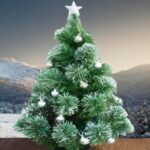By
Selecting a Christmas tree is a cherished tradition filled with excitement. The process can be sprinkled with common mistakes. Here you will find Christmas Tree Buying mistakes and their solutions. The joy of finding the perfect tree can sometimes be dampened by issues like misjudging the size or overlooking signs of freshness. This comprehensive guide aims to enhance your Christmas tree-buying experience. By the end, you’ll be equipped with knowledge to ensure your tree selection aligns with your preferences and avoids common mishaps.
Choosing the Right Type of Tree
Real versus artificial trees’ debate is tackled with an exploration of the advantages and disadvantages of each. Factors such as:
- The environmental impact
- Budget considerations
- Potential allergies
are weighed to help readers make an informed decision. If the allure of a real tree captivates you, we delve into the characteristics of popular species like:
- Fraser fir
- Douglas fir
- Noble fir
Understanding the nuances of each species, including:
- Needle retention
- Fragrance
- Shape
empowers you to select a tree that orients accurately with your festive vision.
Avoiding Common Selection Mistakes
Size matters when it comes to Christmas trees, and we guide you through the process of measuring your space accurately. Taking into consideration the bot:
Height
Diameter
We ensure you have the right dimensions to fit your tree comfortably. Ensuring the overall condition of the tree is crucial, and we equip you with a checklist for inspecting:
- Freshness
- Needle retention
- The absence of pests or diseases
Techniques such as gently bouncing the tree to test for needle loss and examining the trunk for sturdiness are highlighted. Branch density and shape are addressed to help you choose a tree with evenly spaced branches. That is capable of supporting your cherished ornaments. The importance of selecting the right stand is emphasized, covering:
- Size
- Weight capacity
- Stability
- Water-holding ability
Additional Tips
To make your Christmas tree-buying experience even better, here are some extra tips that can really help. We recommend starting your shopping early to get the best choices and avoid the last-minute rush, which might also mean higher prices. It’s a good idea to talk openly with the tree sellers and ask questions for helpful advice. You can also get assistance with loading and transporting the tree to ensure it gets safely from the lot to your festive home. We share tips on taking care of your tree to make sure it lasts. This includes regular watering, placing it away from heat sources, and keeping it out of direct sunlight. And, beyond the holiday season, the guide offers responsible ways to dispose of the tree. This emphasizes the importance of eco-friendly practices.
Conclusion
Choosing a Christmas tree is now an enjoyable and confident journey, thanks to the insights provided in this detailed guide. It tackles potential issues and provides considerations for both real and artificial trees. It explores popular tree species and the dilemma of pre-cut versus cut-your-own. The guide helps readers avoid common mistakes by focusing on solid factors. Additional tips cover early shopping, effective communication, proper care, and responsible disposal. With this wealth of information, selecting a Christmas tree becomes a joyful and error-free experience. It ensures that the centrepiece of festive celebrations brings joy and mindful consideration.
FAQs
Q: How do you know if a Christmas tree is good?
Ans: Check for Freshness “If only a few needles detach, you’ve discovered a fresh tree,” he says.
Q: What is the best style of Christmas tree?
Ans: Local to the forests of North Carolina and surrounding states of Appalachian. The Abies fraseri is commonly regarded as the best Christmas tree species in nature.
Q: How do I choose a new tree?
Ans: First, you must carefully make an estimation regarding your site’s conditions. You then have to be concerned about your tree’s function or purpose. Next, you would need a long-term sight of the tree’s non-developing shape and size.





